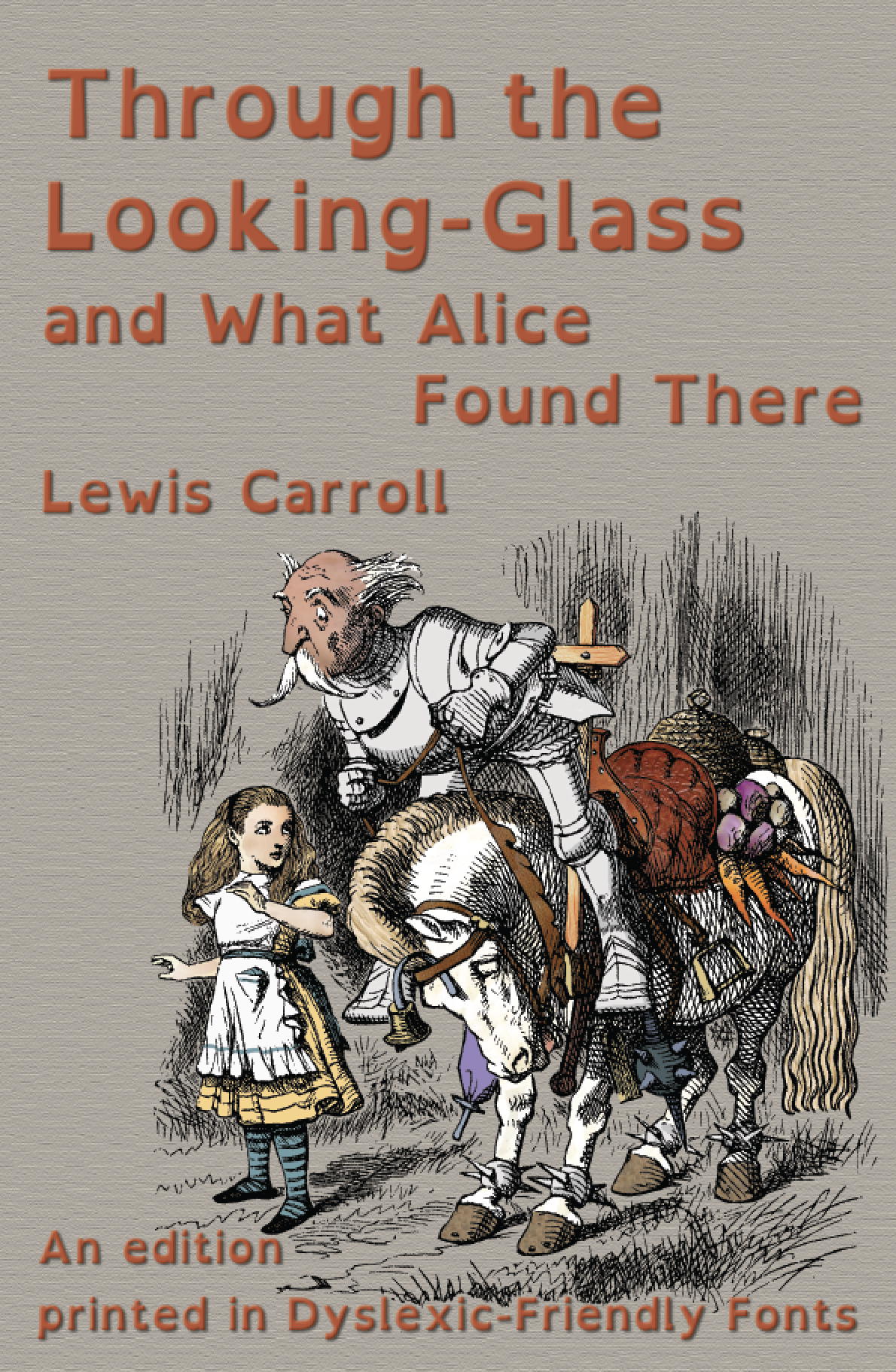Through the Looking-Glass and What Alice Found There:
An edition printed in the Dyslexic-Friendly fonts

By Lewis Carroll
First edition, 2020. Illustrations by John Tenniel. Dundee: Evertype. ISBN 978-1-78201-264-1 (paperback), price: €13.95, £12.95, $15.95.Click on the book cover on the right to order this book from Amazon.co.uk!
Or if you are in North America, order the book from Amazon.com!
|
Alice’s Adventures in Wonderland is a summer tale published by Lewis Carroll (Charles Lutwidge Dodgson) for the first time in July 1865. Many of the characters and adventures in that book have to with a pack of cards. Through the Looking-Glass and What Alice Found There is a winter tale, which Carroll first published in December 1871. In this second tale, the characters and adventures are based on the game of chess. The heroine of both books is Alice Liddell, daughter of the Dean of Christ Church, Oxford, where Dodgson was a tutor in mathematics. Although Alice Liddell was born in 1852, twenty years later than Dodgson, she appears in both books as a little girl of seven, the age she was when Dodgson met her for the first time. It’s clear from the poems ad the beginning and end of the book that Carroll was very fond of Alice Liddell. One should note, however, that Alice’s parents had a disagreement with Carroll in 1864 and Carroll saw Alice very little indeed thereafter. The poem at the end of the book Through the Looking-Glass is an acrostic in which the first lines spell the little girl’s full name: ALICE PLEASANCE LIDDELL. At the end of the book you will find the “suppressed” episode “The Wasp in a Wig”, which was originally intended to be part of Through the Looking-Glass. John Tenniel, who drew the pictures in the first edition of the two books, did not care for this episode, and it was therefore omitted. The splendid picture which graces this chapter was drawn in Tenniel’s style by Ken Leeder in 1977.The fonts used in this edition have been designed with the intention of making reading easier for people with dyslexia. OpenDyslexic3 (used for the body text) and OpenDyslexic (used for its italics) were designed by Abelardo Gonzalez and Lexia Readable (used for the chapter titles drop-caps, and headers) was designed by Keith Bates. Research suggests that dyslexic-friendly fonts are not always effective for all readers; it hoped nevertheless that this edition may help at least some readers to enjoy Alice's adventures. |
||

|
|
|
|
|
||
|
|
||
|
|
||
|
|
||

|
||